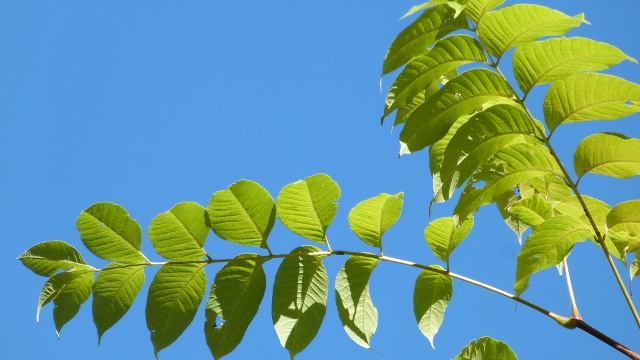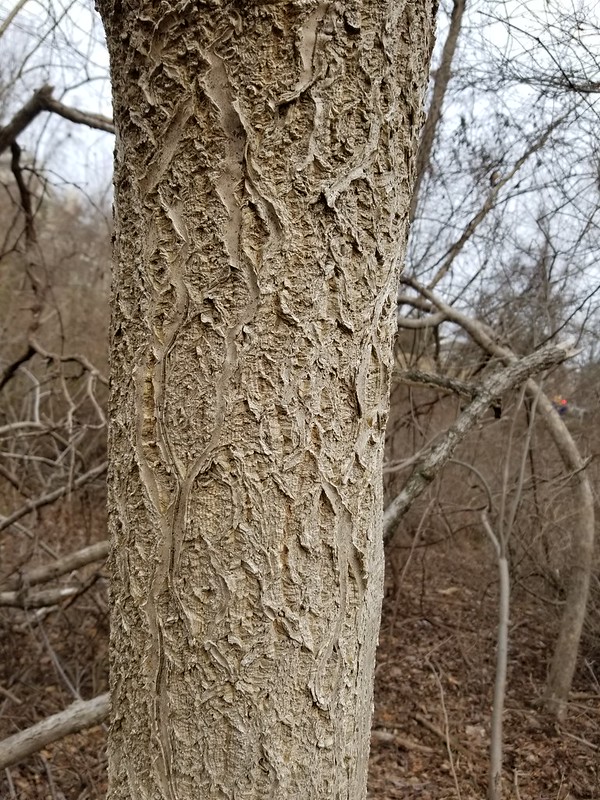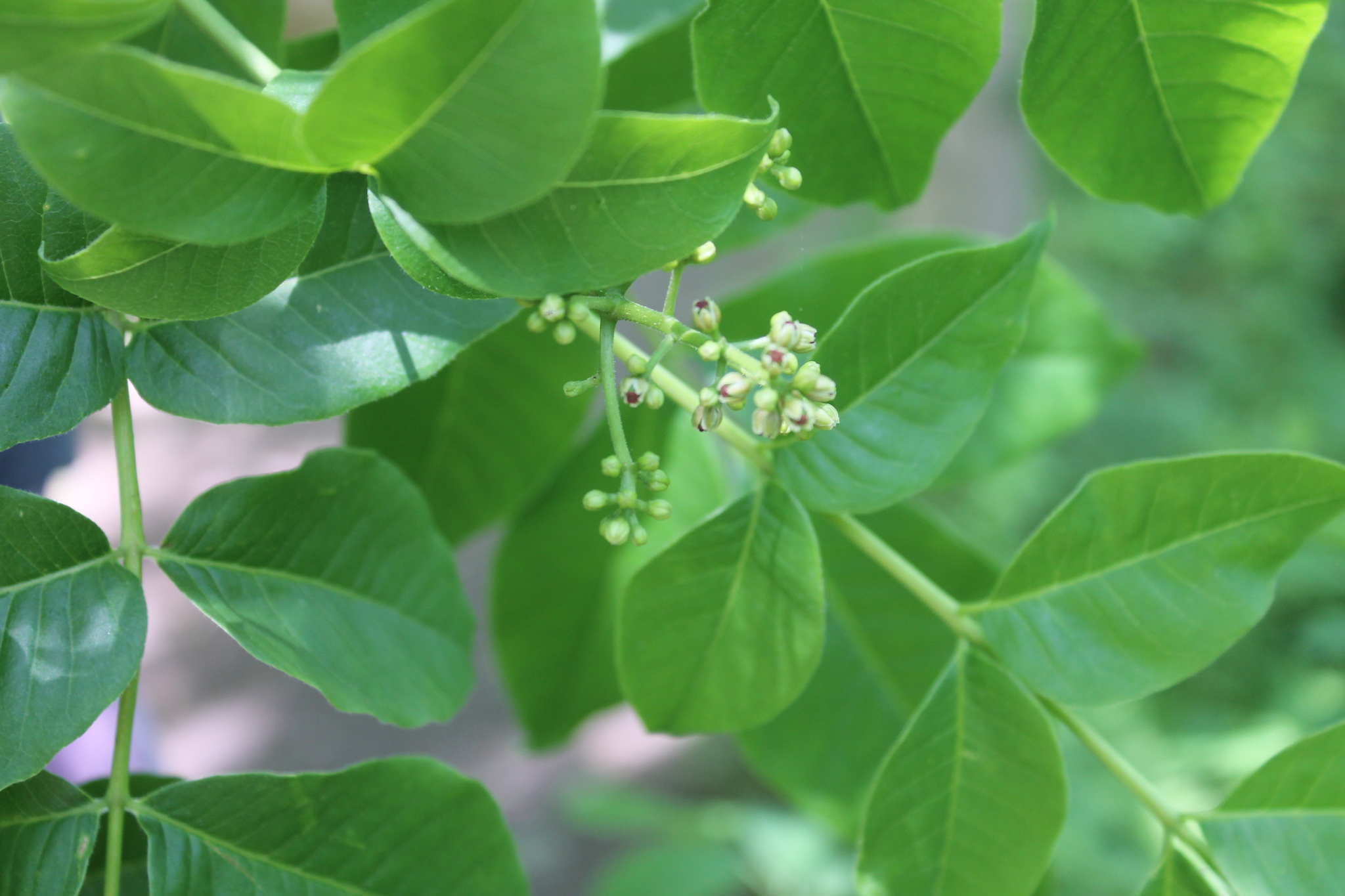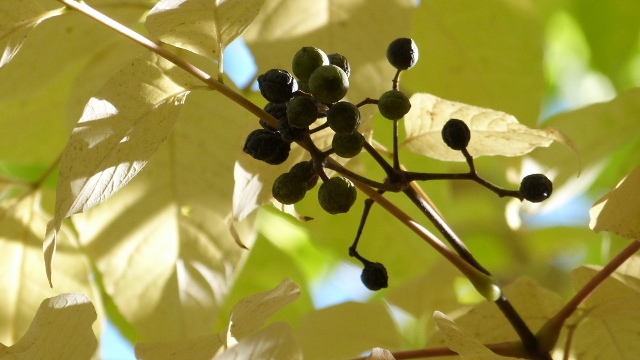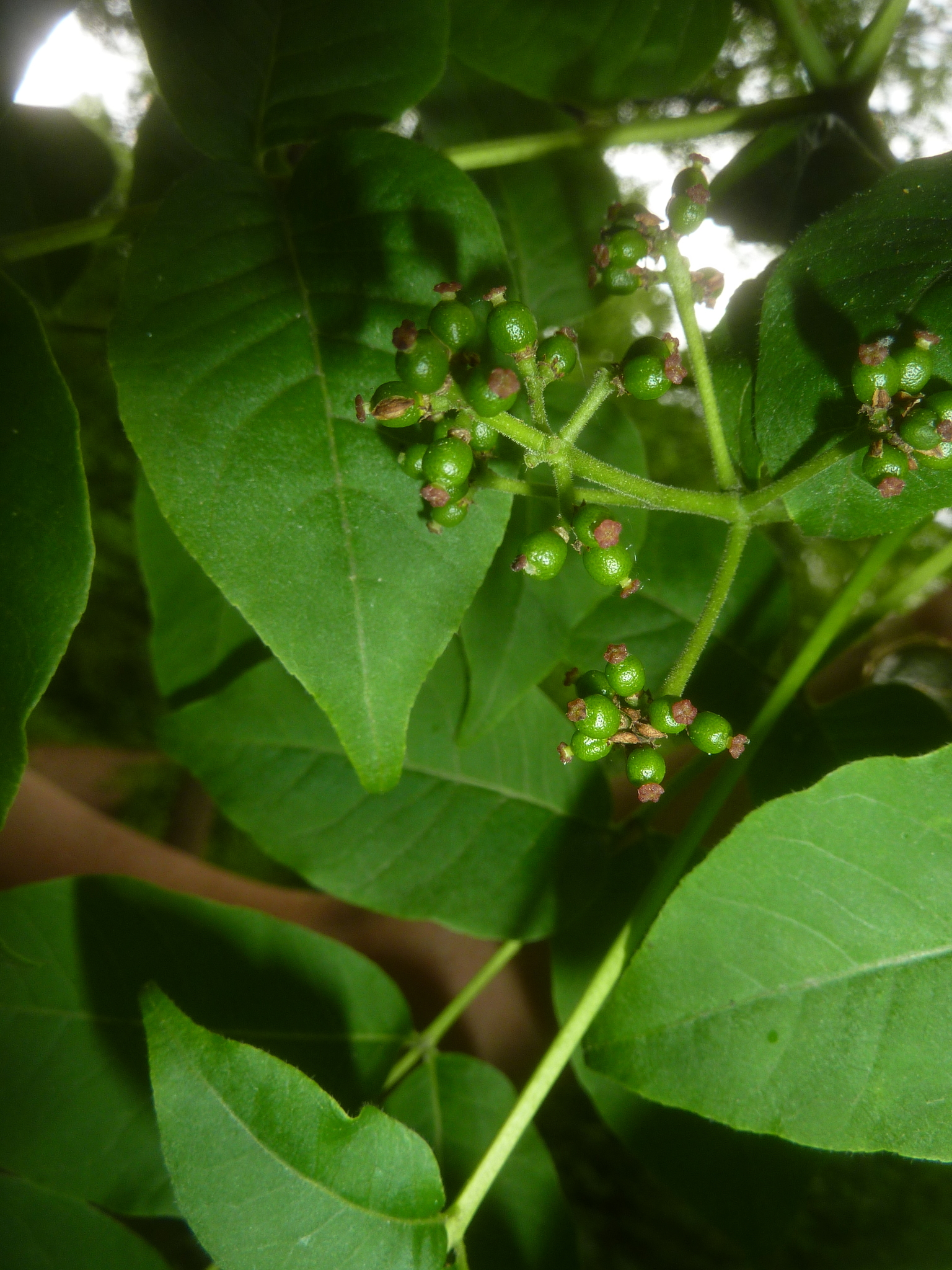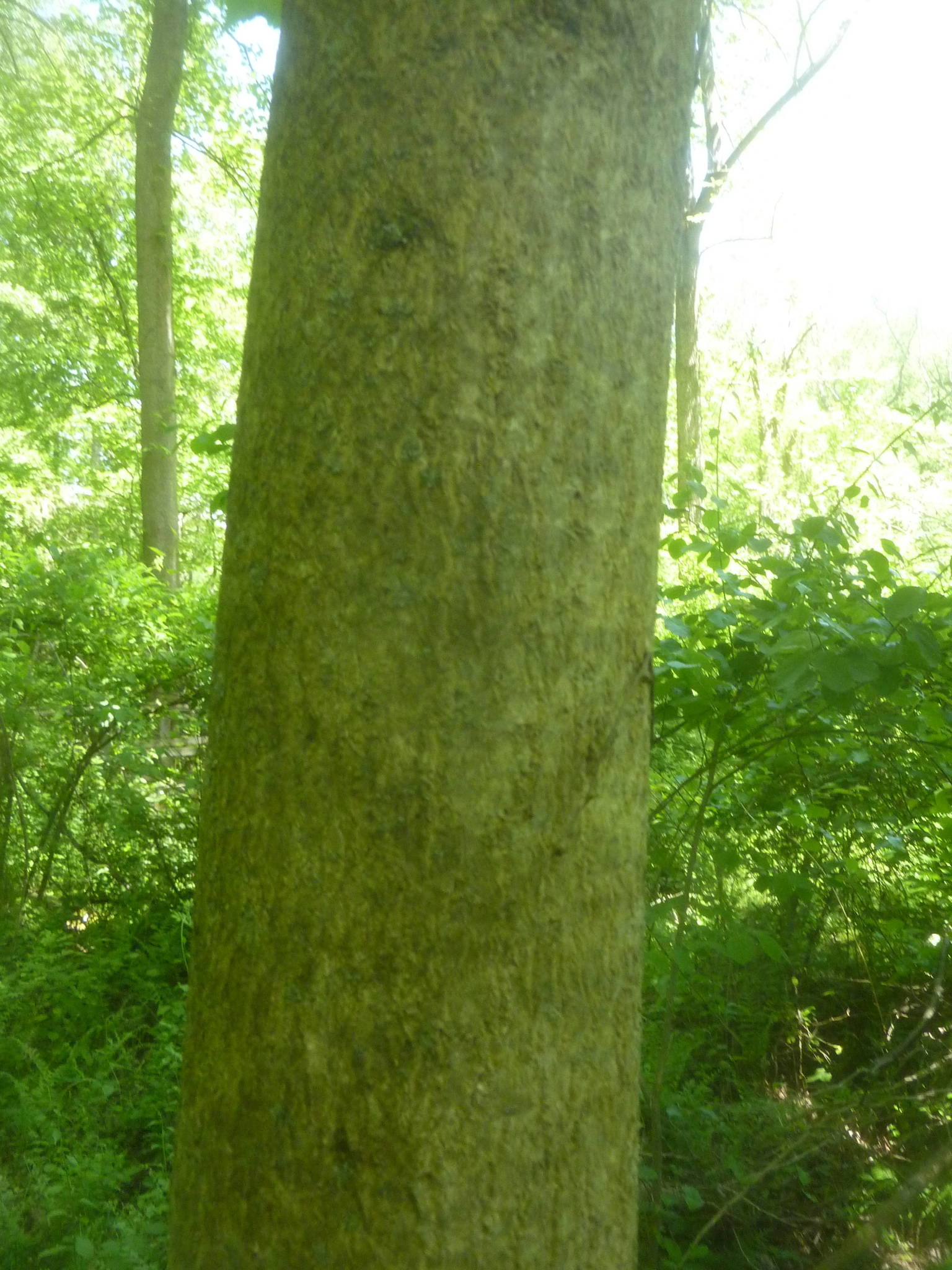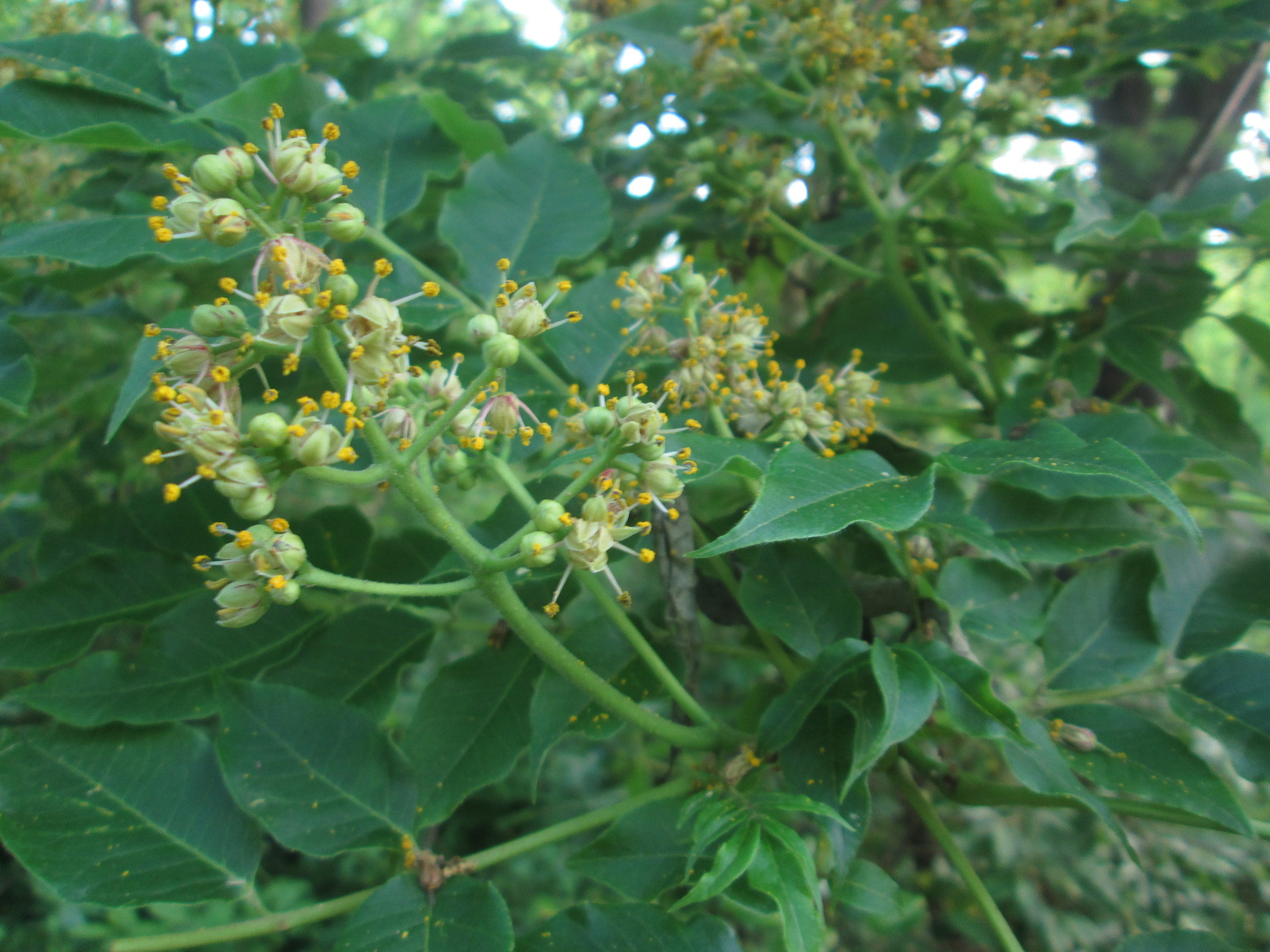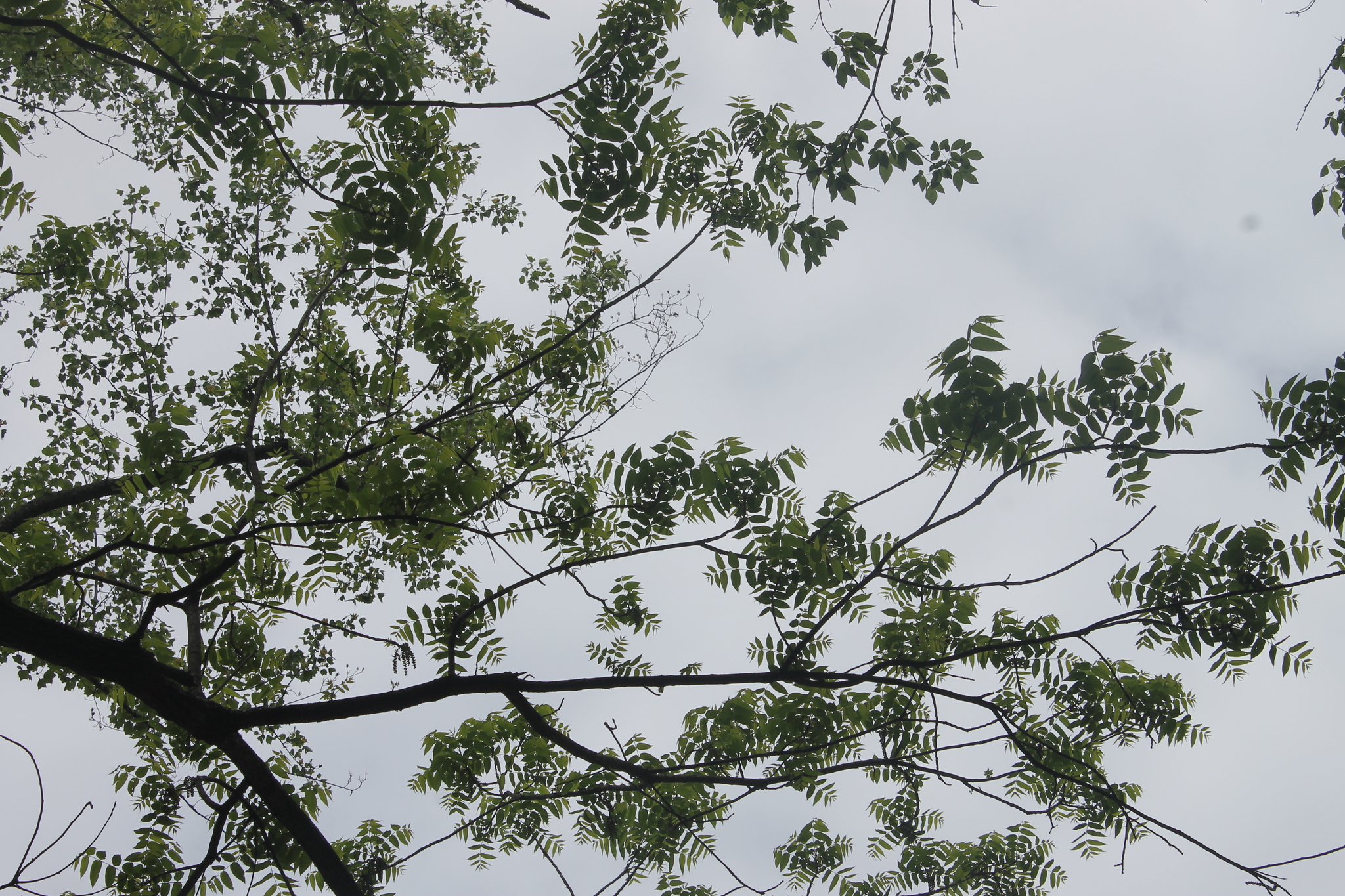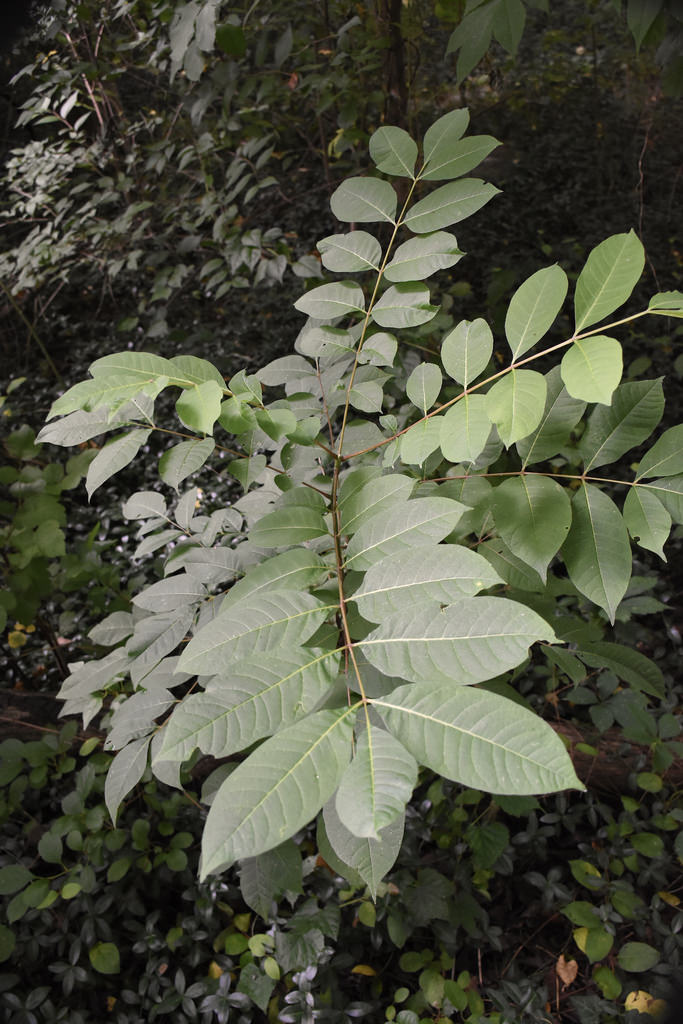

 Synonyms: Japanese Corktree, Phellodendron japonicum.
Synonyms: Japanese Corktree, Phellodendron japonicum.







Native to Eastern Asia. According to the Digital Atlas of the Virginia Flora, "this species could become a serious invasive in native forests, at least in northern and western Virginia. It is reported as behaving invasively in other states, including Illinois, New York, Pennsylvania, and Massachusetts, where it has been declared a 'noxious weed.'" Also reported from West Virginia and several other northeastern states, in addition to Maryland.
Flowers are tiny, greenish yellow to maroon, in clusters, in late Spring. Fruit is a small, ovoid drupe borne in clusters, at first greenish-yellow then turning blue-black. Pinnately compound leaves are oppositely arranged (Kershner, et al., 2008). "The compound leaves are quite attractive, in part because they are rarely marred by insects and disease" (Illinois Wildflowers).
Scattered widely in woods as escapes from cultivation.
There are 17 records in the project database.
| GA | AL | WA | FR | CL | MO | HO | BA | BC | HA | CE | PG | AA | CV | CH | SM | KE | QA | CN | TA | DO | WI | SO | WO |
